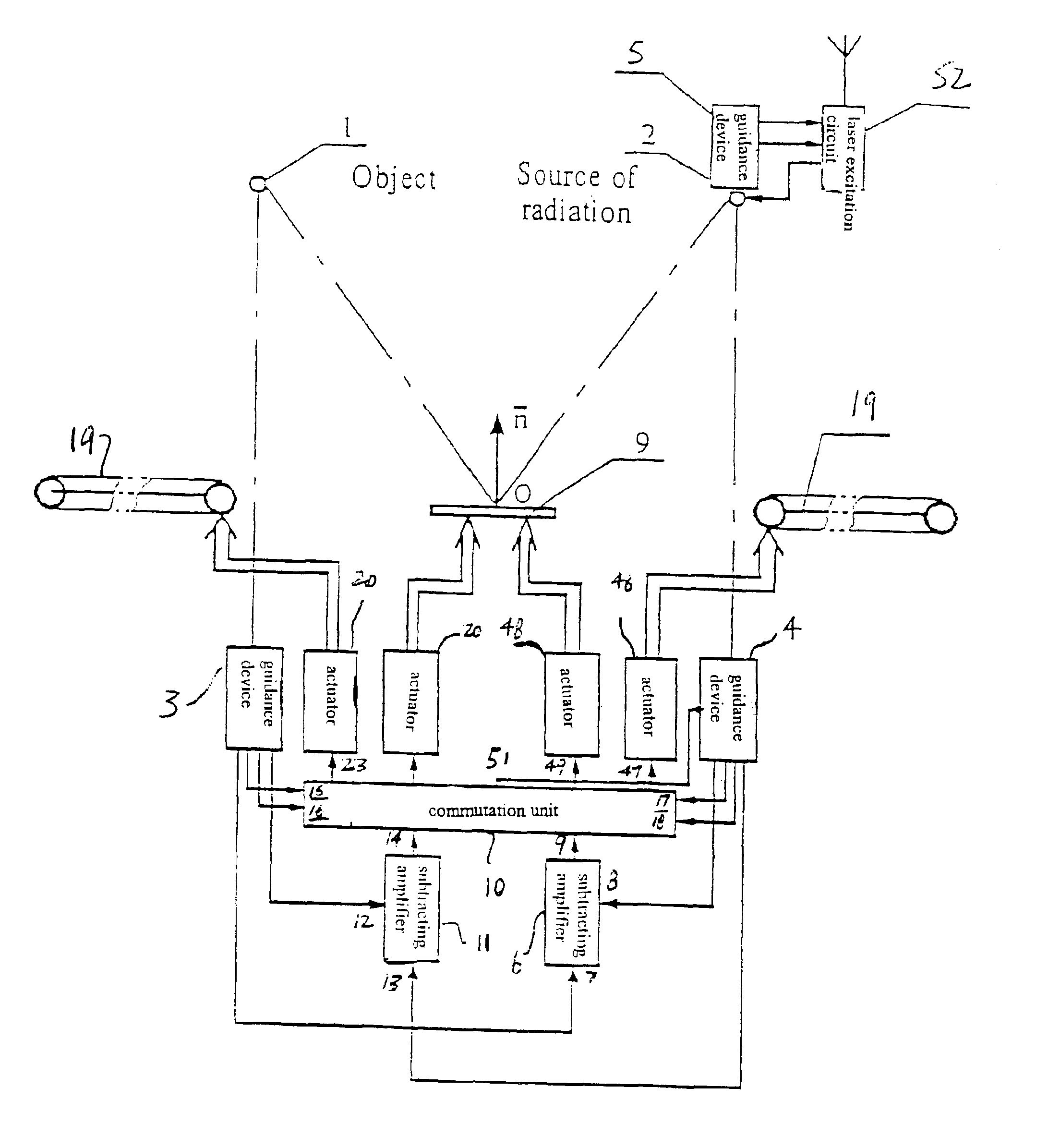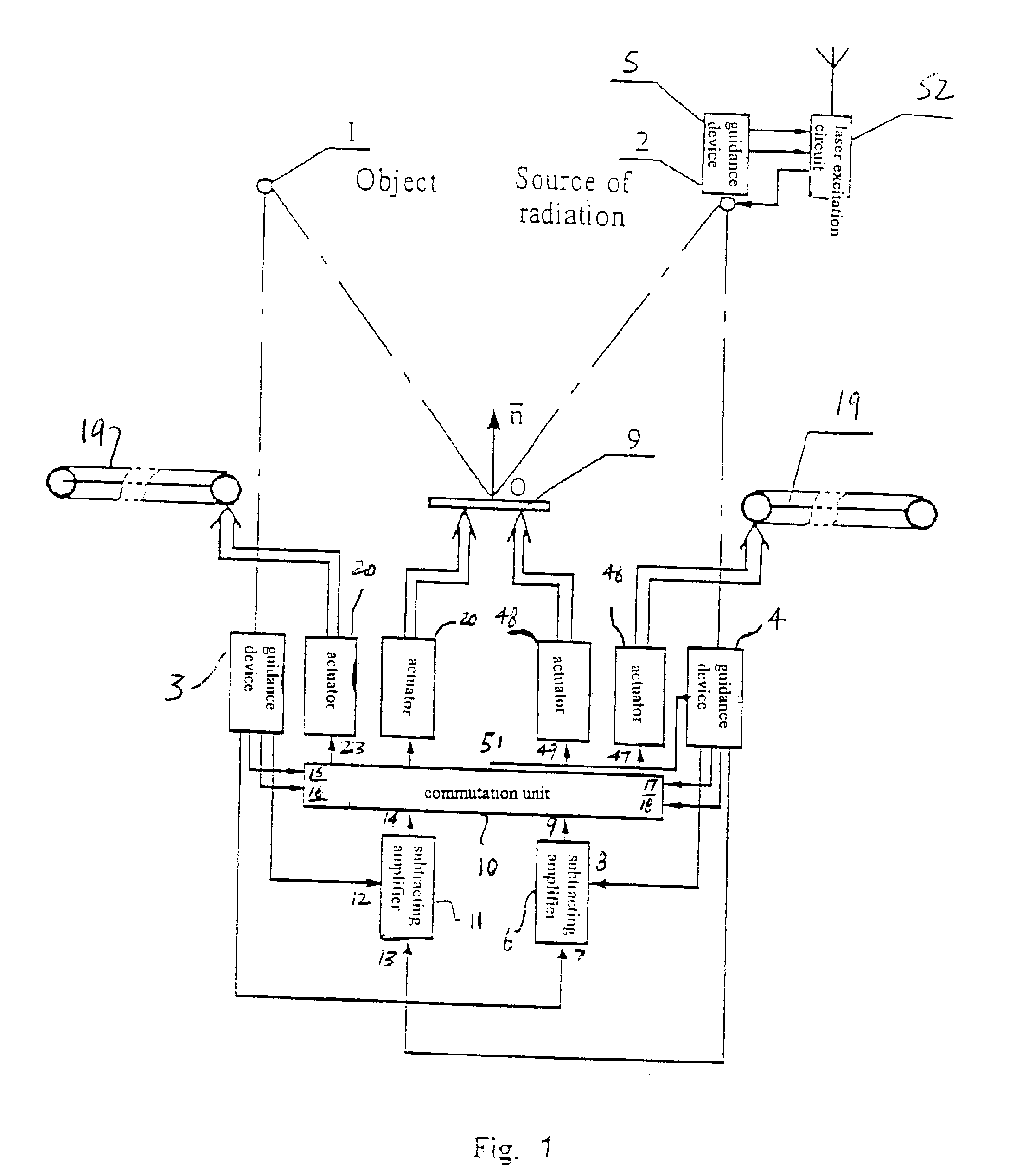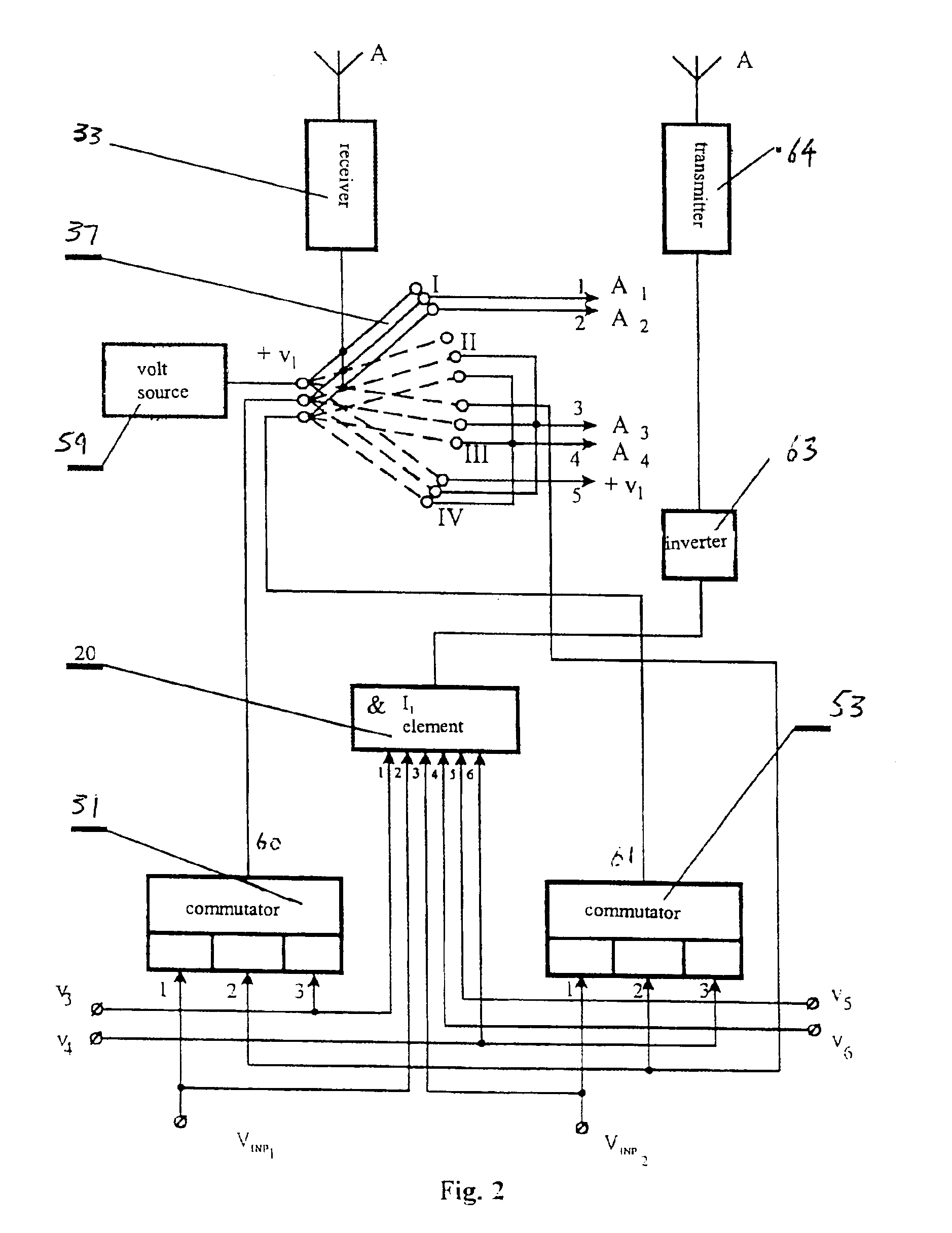System for illuminating an object
a technology of illuminating systems and objects, applied in the field of navigational engineering, can solve the problems of low reliability, low speed response of above-mentioned coordinators, and known systems that fail to provide high accuracy of measuring and achieve the effect of higher measuring accuracy of angular coordinates of targets
- Summary
- Abstract
- Description
- Claims
- Application Information
AI Technical Summary
Benefits of technology
Problems solved by technology
Method used
Image
Examples
Embodiment Construction
[0029]The system for lighting an object 1 (FIG. 1) comprises a radiation source 2 and guidance devices 3, 4, 5, of which the guidance device 3 is optically connected to the object 1, and the device 4, to the radiation source 2. The system further comprises a subtracting amplifier 6 having its inputs 7 and 8 connected to the respective outputs of the guidance devices 3 and 4, while the output thereof is connected to an input 9 of the commutation unit 10, and a subtracting amplifier 11 whose inputs 12 and 5 are connected to the outputs the guidance devices 3 and 4, respectively, and its output is connected to an input 14 of the commutation unit 10. Inputs 15 and 16 of the commutation unit 10 are connected to the corresponding outputs of the guidance device 3, while its inputs 17 and 18 thereof are connected to the respective outputs of the guidance device 4. In addition, the system comprises a mirror 19 with which kinematically coupled are actuators 20 having their inputs connected to...
PUM
 Login to View More
Login to View More Abstract
Description
Claims
Application Information
 Login to View More
Login to View More - R&D
- Intellectual Property
- Life Sciences
- Materials
- Tech Scout
- Unparalleled Data Quality
- Higher Quality Content
- 60% Fewer Hallucinations
Browse by: Latest US Patents, China's latest patents, Technical Efficacy Thesaurus, Application Domain, Technology Topic, Popular Technical Reports.
© 2025 PatSnap. All rights reserved.Legal|Privacy policy|Modern Slavery Act Transparency Statement|Sitemap|About US| Contact US: help@patsnap.com



